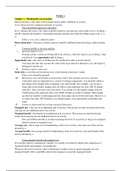Samenvatting
Microeconomics samenvatting
- Vak
- Microeconomics
- Instelling
- Erasmus Universiteit Rotterdam (EUR)
Samenvatting van hoofdstukken 1, 4, 4 appendix, 5, 6, 7, 10, 10 appendix, 11, 11 appendix, 12, 13, 14 van Frank and Cartwright. Microeconomics and Behaviour, 2016, Second Edition, ISBN 4088, McGraw-Hill International Edition. Hele goede samenvatting: alle belangrijke punten staan erin (inclusief ui...
[Meer zien]





